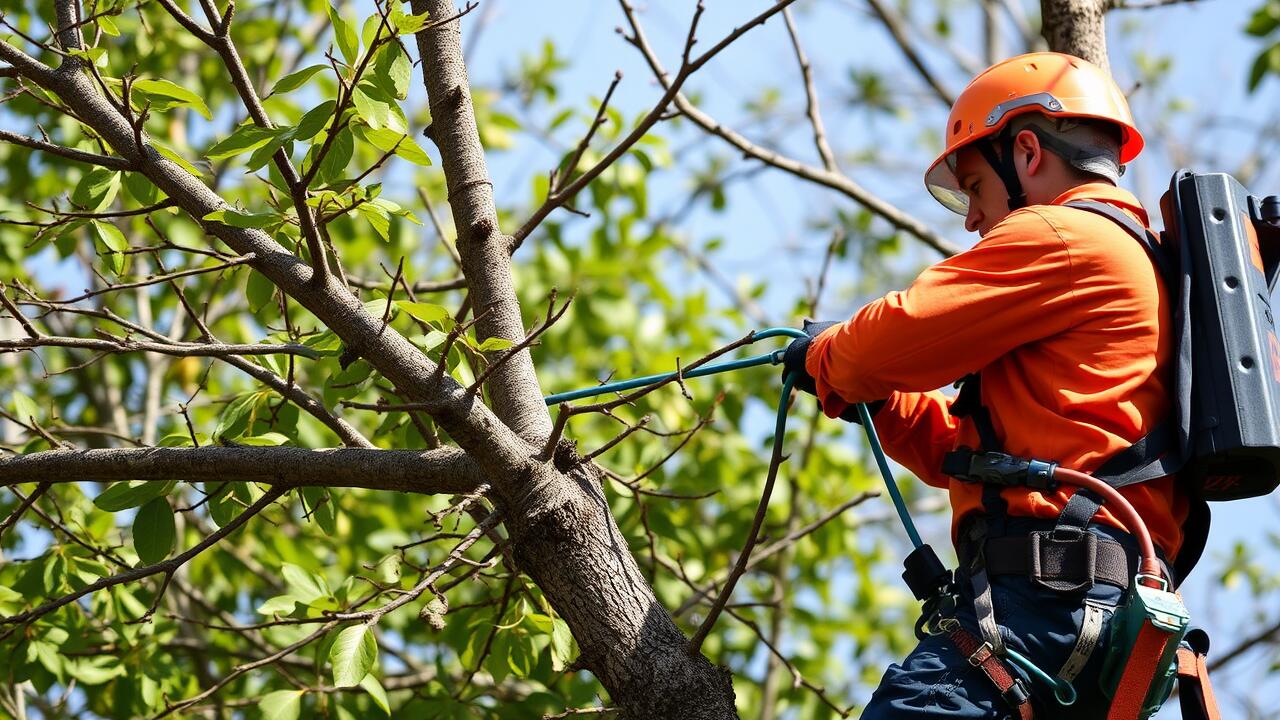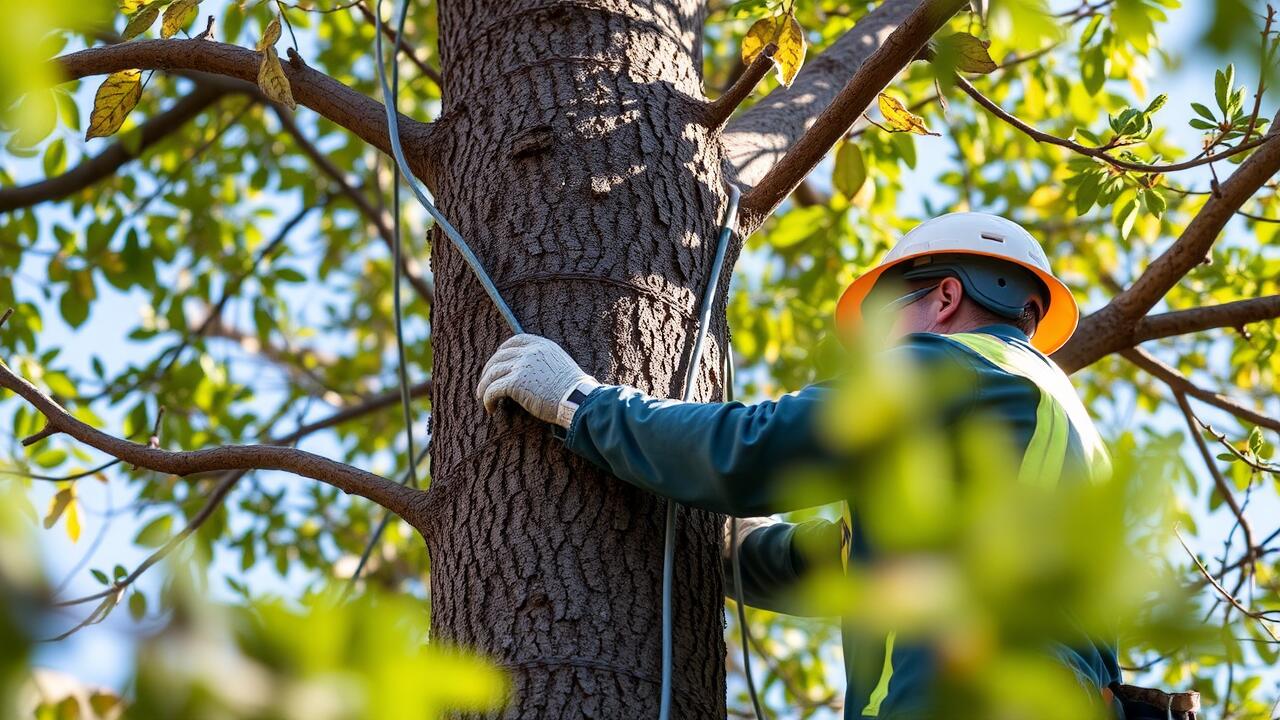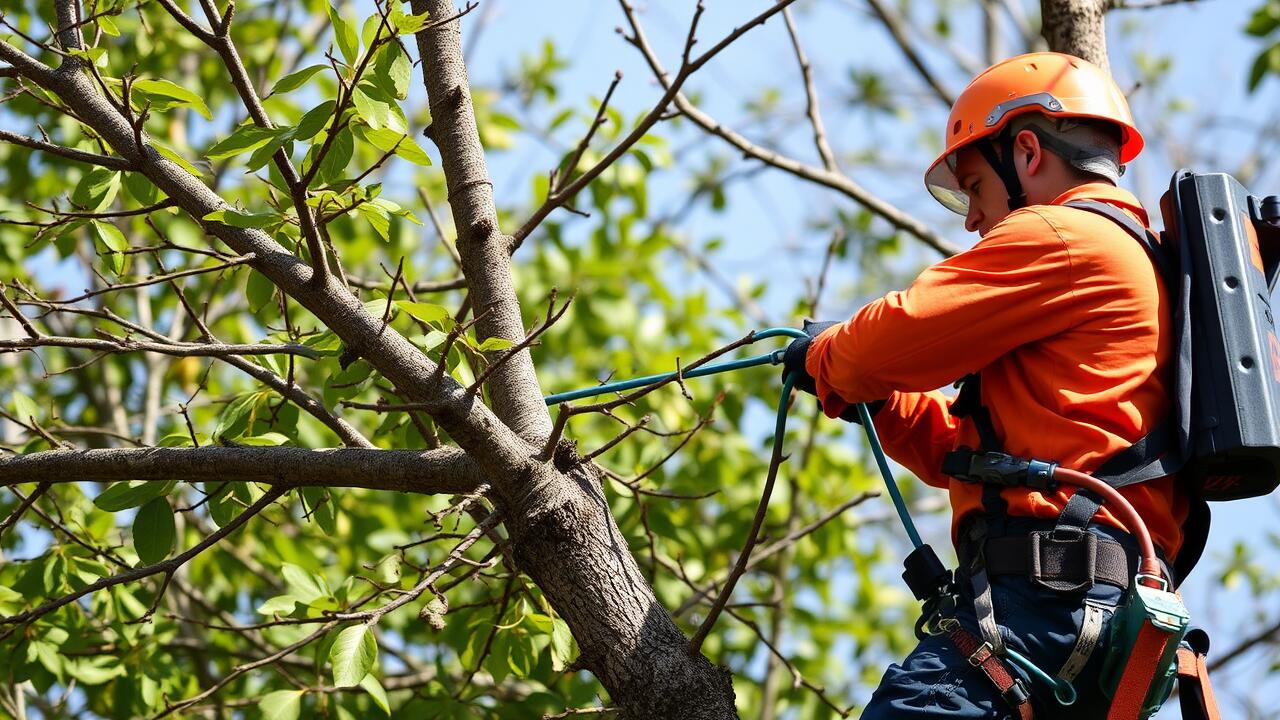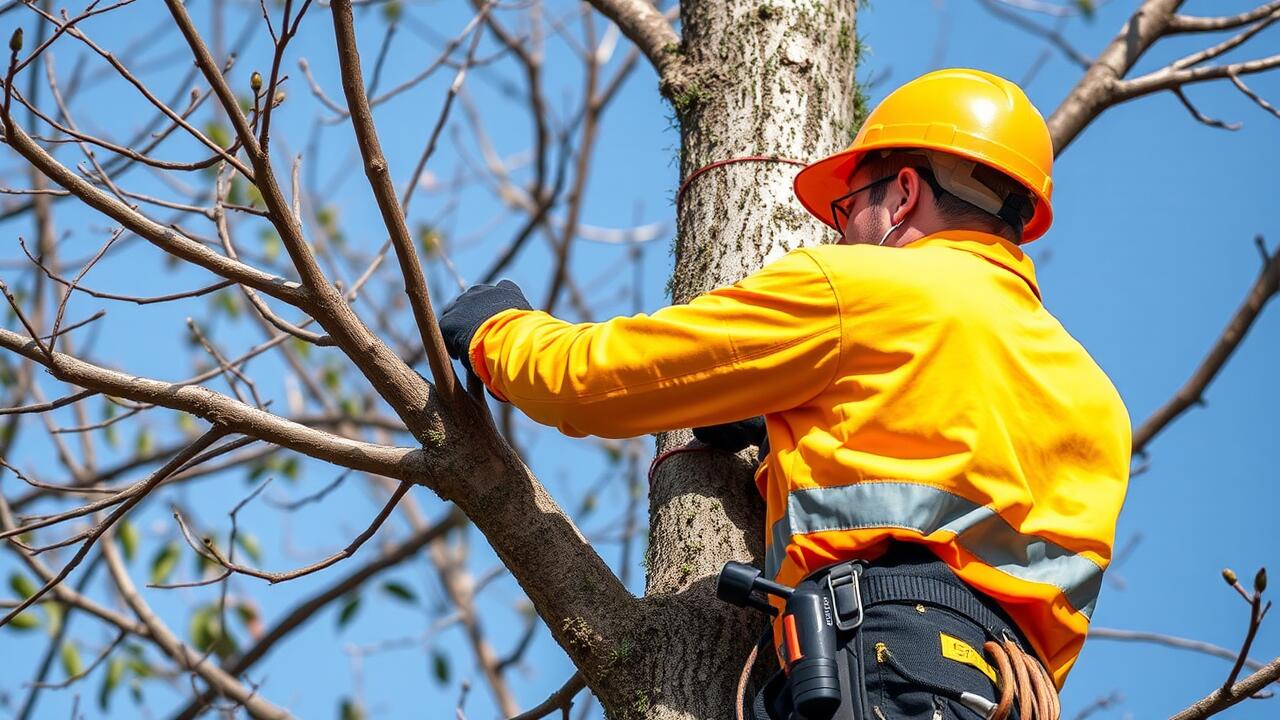
Cost Considerations for Tree Cabling
When considering tree cabling, cost is a vital factor that homeowners must evaluate. Initial expenses often include materials, professional installation, and ongoing maintenance. Quality cabling systems can vary in price, influenced by the tree's size and condition. Hiring an experienced arborist typically adds to the expense, but their expertise can ensure a more effective and safer installation.
In Midtown, Atlanta, the unique ecology and tree species may also impact costs. Local regulations and ordinances might require permits for tree work, which can further increase financial commitments. Assessing the potential long-term benefits, such as reducing the risk of tree failure and preserving landscape value, helps to justify the investment in tree cabling and bracing Midtown, Atlanta.
Evaluating the Expense vs. Benefits
When considering tree cabling, it is essential to weigh the expenses against the potential benefits. The initial costs can vary significantly based on the size of the tree, the number of cables needed, and the professional services hired for installation. Although some property owners may view cabling as a financial burden, the long-term advantages can justify the investment. Healthy trees provide shade, enhance property value, and improve aesthetics in a landscape, making the expense seem more reasonable.
Investing in tree cabling, such as through services like Tree Cabling and Bracing Atlantic Station, Atlanta, can lead to increased tree stability and longevity. This proactive approach to tree care minimizes the risk of branch failure or other damage during adverse weather conditions. However, property owners should consider how the costs stack up against potential property damage and personal safety risks if a tree were to fall. Evaluating these factors can provide valuable insight into whether tree cabling is a wise choice in specific scenarios.
Potential Risks of Tree Cabling
Tree cabling can introduce various risks that homeowners should be aware of before proceeding. One significant concern is that improper installation can lead to more harm than good, potentially creating stress points that may cause the tree to crack or break. Additionally, cables and braces can interfere with a tree’s natural growth patterns, leading to distortions that could weaken the structure over time. Monitoring the installation closely becomes crucial to avoid exacerbating existing issues.
Another risk associated with tree cabling is the potential for decay. Cables that are not regularly inspected can trap moisture around the attachment points, which can lead to fungal growth and rot. This decay can compromise the health of the tree, ultimately shortening its lifespan. Local professionals specializing in Tree Cabling and Bracing Druid Hills, Atlanta, can provide essential insights and maintenance practices to mitigate these risks, ensuring that the trees remain healthy and structurally sound.
Understanding the Drawbacks
While tree cabling can offer structural support, it also comes with a set of potential drawbacks. Over time, the hardware used in cabling can wear down or corrode, leading to the possibility of failure. In areas like Grant Park, Atlanta, environmental factors such as humidity and heavy winds may exacerbate these issues. If not monitored regularly, cabled trees could present hazards. The added stress of cables may affect the tree's natural growth patterns and could create weak points at attachment sites if improperly installed.
In some instances, cabling can cause discomfort to a tree, as it may restrict its natural expansion. This can result in bark damage or issues with nutrient transport. Tree Cabling and Bracing Grant Park, Atlanta, emphasizes the need for careful assessment and skilled installation to avoid harming the tree's overall health. Regular evaluations are crucial to ensure that the cabling remains effective and does not compromise the tree's longevity or structural integrity. Addressing these risks is essential for maintaining a healthy and resilient tree.
Long-Term Care Post-Cabling
Cared-for trees benefit significantly from regular maintenance, especially after undergoing cabling. It is crucial to monitor the condition of the cables. Periodic inspections can help identify any signs of wear or damage. This ensures that the cabling continues to provide the needed support without causing injury to the tree. Professional evaluation is often recommended to ensure that the cabling remains effective and safe for the tree's health.
Additionally, maintaining the overall well-being of the tree is equally important. Proper watering, mulching, and fertilization can aid in recovery and promote healthy growth. Awareness of the tree's environment and any potential stressors, such as pests or diseases, should be prioritized. When seeking expert assistance, consider reaching out for "Tree Cabling and Bracing Little Five Points, Atlanta." A professional can offer tailored advice to ensure the longevity and health of your tree after cabling.
Maintenance Tips for Cabled Trees
Regular maintenance is crucial for the long-term health of cabled trees. Inspect the cables at least once a year or after severe weather events to ensure they are secure and not rubbing against the tree’s bark. Look for any signs of wear or damage, such as fraying or rust, and address these issues promptly. Adjustments may be necessary as the tree grows, which can prevent potential harm to its structure.
Monitoring the overall health of the tree is also essential. Keep an eye out for any changes in foliage, bark, or growth patterns that may indicate stress or disease. Consulting with a professional service such as Tree Cabling and Bracing Midtown, Atlanta can provide additional insights and recommendations for maintaining the stability and vitality of your cabled tree. Regular assessments help ensure that the benefits of cabling are maximized.
FAQS
What is tree cabling?
Tree cabling is the process of installing cables or rods in trees to provide structural support, helping to prevent splits or breaks in branches and trunks.
How much does tree cabling typically cost?
The cost of tree cabling can vary widely depending on the size of the tree, the number of cables needed, and the complexity of the installation, but it generally ranges from a few hundred to several thousand dollars.
What are the benefits of cabling a tree?
Cabling a tree can help improve its structural integrity, prevent damage from storms or heavy winds, and extend its lifespan, making it a valuable investment for maintaining tree health.
Are there any risks associated with tree cabling?
Yes, potential risks include improper installation, which can lead to further damage to the tree, and the possibility of cables causing injury to the tree over time if not maintained properly.
How should I care for a tree after it has been cabled?
Post-cabling care involves regular inspections to check the condition of the cables, monitoring the tree for signs of stress or damage, and ensuring that the cabling system is maintained effectively to avoid any long-term issues.



